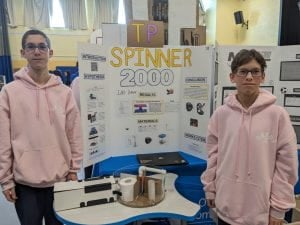
יצירת חפץ מהספר כנפי האש – מבקר חלומות

סימנייה לספר כנפי האש
News flash video on Nachshon Operation
תפזורת על הספר כנפי האש
תפזורת:
| ז | ס | ג | א | ז | ת | ל | ר | ד | ק | ט |
| ד | ע | ב | ב | ק | א | ש | נ | ע | נ | נ |
| נ | ה | פ | י | ד | ט | ש | ש | ש | ב | ט |
| ג | ט | ו | פ | ר | י | ה | ש | ל | ו | מ |
| כ | ג | ס | ס | ז | ע | נ | ה | ת | א | ש |
| ט | נ | א | ב | ש | ו | ג | י | כ | ה | ד |
| א | י | ד | ש | ק | א | מ | י | ס | ו | א |
| ע | ח | ע | ר | ב | י | ט | ר | ב | ק | ג |
| ט | י | ד | ח | ת | כ | כ | י | ל | ק | ב |
| ק | ת | ש | ק | צ | ג | ע | פ | ז | א | ז |
| ס | י | ע | ר | ג | ש | מ | ת | ה | ב | ו |
מחסן מילים:
דרקון, נבואה, טופרי השלום, פירייה, יער גשם.
כריכה לספר- כנפי האש

לוח בחירה – טו בשבט
דברים חדשים שלמדתי מהמשימה “מחזור חיי הצמח” בלוח הבחירה הם:
- למדתי שכדי שהזרע יתחיל לנבוט הוא זקוק לכמה דברים: חמצן, מים, וטמפרטורה מתאימה.
- למדתי שכמות אור וצמחים אחרים משפיעים על הנביטה.
- למדתי שבתהליך הנביטה, אחרי שהקליפה תופחת, יבקע ממנה שורשון ונצרון, שמהם שורשים ועלים יתחילו לצמוח.
- למדתי שפסיגים הם העלים הראשונים של הצמח, שמתחילים לבצע פוטוסינתזה.
- למדתי שצמח צעיר נקרא “שתיל”.
- למדתי שבצמח הבוגר יפרחו פרחים – ככה הצמח מתרבה, ומהפרחים יצמחו פירות.
- למדתי שאחרי שמשהו אוכל את הפרי או שהוא נופל, הזרעים יגיעו לאדמה, שם יצרו צמח חדש.
Innovation Day Reflection
Introduction:
My Reflection:
My feelings before starting my Innovation Day project were excitement, joy, and anticipation. I had been waiting for Innovation Day for a long time and was very excited when it was time to start working on the prototype.
I was excited about creating the project and preparing the prototype, but these feelings definitely changed over time: I couldn’t decide on a suitable invention, and preparing the prototype became agonizing due to lack of time.
One of the actions that contributed to my success on Innovation Day, both positively and negatively, is that our project broke in a part, which required an annoying repair, but the new part we used looked better than the one that broke, which helped the project succeed.
The actions I took to make my project “glow” were to buy a wooden board with a white coating, to make it look like a large, clean, and aesthetically pleasing toilet paper roll.

After presenting the project to the judges, I felt like I made a good impression on them. The problem and the solution we chose helped me and Aviv a lot in presenting the project.
My biggest challenges during this process were gluing everything together. The glue we chose was a non-sticky jelly, which only set after 24 hours, which made gluing very difficult.
Things I would do differently next time, based on what I did compared to others, are adding lighting to the board, maybe pink cotton wool to the bottom of the contraption like a pillow, and putting the contraption in the way it’s supposed to be placed, so it works properly.
conclusion:
This blog post tells about how I felt before and after Innovation Day, meeting the judges, preparing the prototype, difficulties and solutions, Introduction, and finally, possible additions.
Ido’s SMART Goals
| Personal Reflection | One area I need to improve is my confidence in speaking English. I would like to work on answering questions in English in class and practicing more in class discussions in English. |
|
Academic and Learning Skills Goal |
For this school year, one of my academic goals is to review my work before giving it to my teacher. In math, I can avoid small mistakes if I check my work when I am done. In English, I will use Read&Write to check my spelling and grammar. It can also read my work out loud, which will help me detect other mistakes as well. |
| Accommodations and Support: | I have been thinking about the tools or support I need to reach my goals. It would help me if my teachers helped me prepare a checklist that would remind me to check my work before submitting it to my teachers. It would help me if my teachers called on me to answer questions in English. I think the more I do it, the more comfortable I will be to do it by myself. |